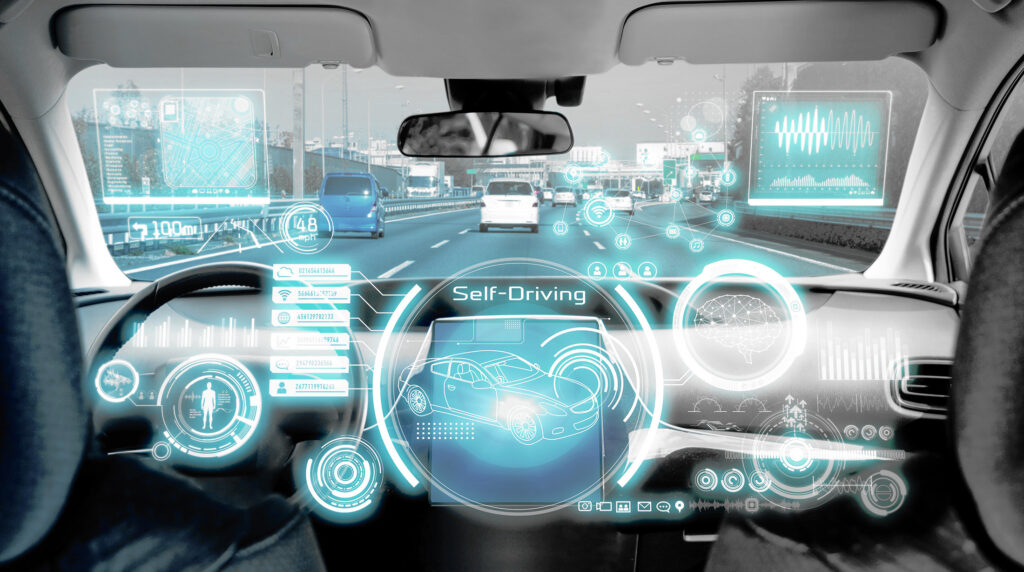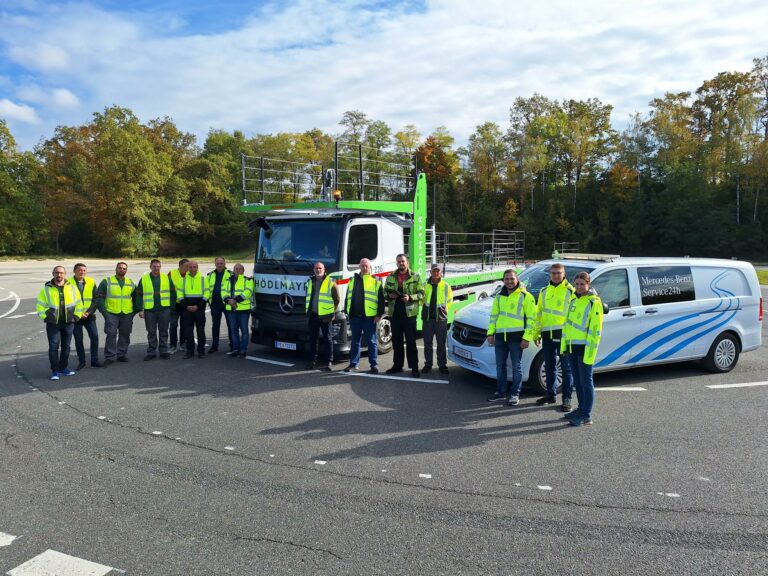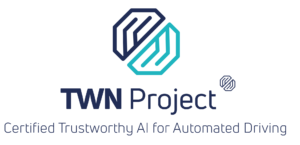AI Trustworthiness & Automated Driving - Trust in Artificial Intelligence: A Critical Success Factor on the Road to Automated Driving
Automated driving will be part of our future. In Upper Austria, industry and research are already working on this. The greatest challenge here is to create trustworthy artificial intelligence (AI) at the steering wheel.
In the “AI Trustworthiness & Automated Driving” project, the Automotive Cluster (AC) of the Business Upper Austria location agency, DigiTrans GmbH, RISC Software GmbH and Software Competence Center Hagenberg GmbH (SCCH) have developed a roadmap for Upper Austria as a business location.
Clear process for the certification of automated vehicles
In order to be able to introduce automated driving, many questions still need to be clarified. This is one of the most important findings from the project. There is also a great deal of uncertainty about the appropriate approach to development, approval, etc. The investment costs for automated driving and market-ready automated vehicles are high.
The investment costs for automated driving and market-ready automated vehicles are high, which is why the industry is hesitant. It needs a clear concept for the future certification of automated vehicles. This is the only way to promote development and drive usage.
So for the industry to play a role in the introduction of automated driving, it needs a standardized certification process as soon as possible. To achieve this, all players, all stakeholders – industry, politics, research and legislation – must pull together and drive development forward together.

Symbol image – AI trustworthiness and automated driving,
metamorworks – www.istockphoto.com
Pooling International Know-How on a Test Track
The test track in St. Valentin, which was set up as early as the 1930s, is located on the grounds of the Magna Powertrain Engineering Centers Steyr. In the summer of 2021, Digitrans held the groundbreaking ceremony for the expansion of the test site into a state-of-the-art test center for automated driving and automated goods transport. As of summer 2022, the completed proving ground will offer numerous additional elements for the testing of automated driving functions in real-world conditions in a reproducible fashion.
Automated driving as a complex challenge
A person at the wheel instantly perceives all the information relevant to him and filters it. Based on his experience, he reacts correctly in a fraction of a second, assesses the situation and makes a decision to act: If a child suddenly runs onto the road, the person brakes and tries to avoid it. If the weather conditions change, he adjusts his driving style accordingly.
Humans are therefore constantly interacting with their environment. This is also what AI must do for automated driving in order to be trustworthy. It must recognize the complex situations in road traffic, assess them correctly and react correctly. To do this, a wide variety of systems must interact well and be properly trained.
This requires processing huge amounts of data while driving and an extensive training data library. The training data must include an enormous amount of different traffic scenarios, all traffic rules, all weather conditions, traffic signs and road conditions.
Verifying that this data is complete and that the AI is robust enough to malfunctions or attacks makes the certification of AI systems very complex for researchers. It requires entirely new methods and a uniform, standardized certification process.

AI trustworthiness and automated driving – complex traffic scenarios that human drivers deal with in everyday life must also be able to be solved by an AI at the steering wheel.
How this certification process can look and what research and development work still needs to be done on the way to certification was the content of the “AI Trustworthiness & Automated Driving” project. The classification and definition of terms for road-bound motor vehicles with systems for automated driving are carried out at six levels.
The project starts at Level 3 of vehicle automation, where a driver still needs to be in the car, but only intervenes in certain situations or when danger is imminent. At Level 4, the vehicle can drive autonomously, but in restricted operating environments. Level 5 then describes fully autonomous vehicles that are on the road without any restrictions.
Definition of Trustworthiness - AI Trustworthiness and Automated Driving
It all started with the definition of AI trustworthiness for automated driving. The project consortium defined seven dimensions that must be fulfilled, in line with the EU template “Assessment List for Trustworthy Artificial Intelligence (ALTAI)” of the High-Level Expert Group:
- Explainability: support in understanding how information is used and how the vehicle makes decisions.
- Accountability: being held accountable for all actions taken
- Privacy: Respecting data protection.
- Security: protecting all actors and their environment from physical and digital harm
- Verifiability: Allowing verification of actions and investigation of the method by which they were performed
- Impartiality: Making fair decisions
- Reliability: ensuring that the vehicle performs consistent actions

AI Trustworthiness and Automated Driving – the Seven Dimensions © DigTrans GmbH 2022
Test methods and research roadmap for trustworthy AI in automated driving
Next, the project team identified six testing methods that provide different contributions for the seven dimensions to secure an AI. Researchers at SCCH, for example, have already been working on analysis methods and transparency in deep-learning-driven image analysis systems since 2019.
“Put simply, we are working on AI algorithms that monitor AI learning and correct solutions. The dimensions involved are explainability and interpretability. In the end, the goal is to create a trustworthy AI,” explains SCCH Managing Director Markus Manz.
The project consortium defined in a research roadmap what still needs to be researched around the test methods and for the subsequently developed certification process. The close exchange with politics, legislation and industry also plays an essential role in this roadmap in order to be able to develop an application-oriented solution in a timely manner.
Certification process - trusted AI for automated driving
The certification process consists of a step-by-step plan that begins with simulation verification. “In this process, critical and representative scenarios from the operational environment must be satisfactorily run through in the simulation in order to be able to guarantee traffic safety and efficiency in real traffic events,” explains RISC managing director Wolfgang Freiseisen.
Here, RISC Software GmbH can contribute its many years of experience in virtual traffic simulation, which it gained in the EVIS.at project while simulating current traffic conditions on Upper Austria’s roads.
Subsequently, the interaction of the AI, the vehicle and its sensor technology will be tested with real tests at the test site in a controlled test environment under different weather and lighting conditions. After these successful tests, pre-certification is planned with the help of an expert audit by a testing institute. This pre-certification serves as a basic prerequisite for the subsequent field test with safety drivers on public roads.
DigiTrans GmbH has had research experience in this area for two years and can also provide the proving ground in St. Valentin. Successful completion of the field test and the final stage, the concluding expert audit, ultimately leads to a Trustworthiness Certificate valid in the intended operational environment.
Strengthening the business location and supporting sustainability goals - potential of automated driving
The potential and benefits of automated driving were also evaluated. Four of the United Nations’ 17 Sustainable Development Goals (SDGs) are addressed: Automated vehicles improve our health and quality of life. This is because they drastically reduce accidents and their costs – according to an AIT study, this currently amounts to 7.2 billion euros per year throughout Austria.
Automated commercial vehicles enable more efficient use of infrastructure and help to expand the industrial base. This is because logistics systems become more flexible and efficient, which optimizes traffic flows and results in fewer empty runs. A high-quality industry with enormous growth potential is being created.
According to estimates, the turnover of vehicle systems manufacturers in Upper Austria could increase fivefold in 15 years. According to Fortune Business Insights, there is potential revenue growth of 31 percent per year for the automated vehicle industry. The business location of Upper Austria will also become interesting for international investors due to the possibilities of certification.
Furthermore, automated commercial vehicles enable more sustainable cities and communities through the automated maintenance of infrastructure for climate-neutral traffic. Areas and space that are now taken up by vehicles will be freed up for other purposes in the future. More efficient distribution of traffic makes new road construction obsolete.
Another positive effect: we will only be stuck in traffic jams for half as long as before, which in turn will save costs. These positive effects lead to the fourth SDG: Automated vehicles pave the way to Zero Emission Mobility. All of this, of course, also contributes to achieving climate and environmental protection goals.
Future scenarios - Upper Austria as a model region for automated driving
The project team has drawn up four future scenarios. In scenario 1 “Deep sleep”, Upper Austria takes no further action. The technology is developed abroad and cannot be used in Upper Austria.
In scenario 2, we are followers. “We use the technology developed abroad, but due to a lack of approval competence, we apply automated driving late. At the same time, we increase the risk behind its use,” emphasizes automotive cluster manager Florian Danmayr.
From his point of view and that of the project consortium, scenario 3 or 4 should be strived for:
“In the former, we are fast followers, use the technology of automated driving extensively and develop at full steam. The ideal situation, however, would be scenario 4 as a pioneer: We manage to create an environment in which Upper Austria is perceived as a model region for automated driving and thus make ourselves very attractive for international investors.”
“If Upper Austria manages to become a model region, Upper Austrian companies will be able to bring their developments to the market with legally secure approval. Upper Austria’s researchers can build up an international reputation and make the research location even more attractive. Upper Austria’s authorities, in turn, can use this knowledge to make excellent decisions about the use of any AI, including that developed abroad, in our region”
DI Eva Tatschl-Unterbeger MBA / CEO DigiTRans GmbH

Financing options
The project consortium also estimated the necessary investment costs and formulated recommendations for further steps. The industry will support the trustworthiness strategy with a letter of interest.
Since the investment costs in scenarios 3 and 4 will be enormous, a financing plan is needed. Part of the investment can be covered by already existing regional, national and European funding programs. However, new incentives from the public sector will also be needed.
About the Project AI Trustworthiness and Automated Driving
You might also be interested in
Further Insights

Limitless – 205 km/h with RC model cars on the proving ground in St. Valentin
Two model racers test the limits of their RC model cars – reaching speeds of up to 205 km/h during a speed test at the Digitrans test center on the proving ground in St. Valentin.

Road marking systems and autonomous driving – Digitrans expert interview with SWARCO Road Marking Systems
SWARCO Road Marking Systems has been a cooperation partner of Digitrans in the field of road marking systems since July 2021.
Since then, SWARCO’s road marking experts have been testing the readability of road markings for the sensors of modern vehicles in the Digitrans Test Center for Autonomous Driving under a wide range of external conditions.

Truck driver assistance systems – ADAS training sessions at the Digitrans test center for autonomous driving
At the ADAS training session on the proving ground in St. Valentin, truck driving instructors from Hödlmayr were able to learn more about truck driver assistance systems and test them in practice in the safe environment of a proving ground.

